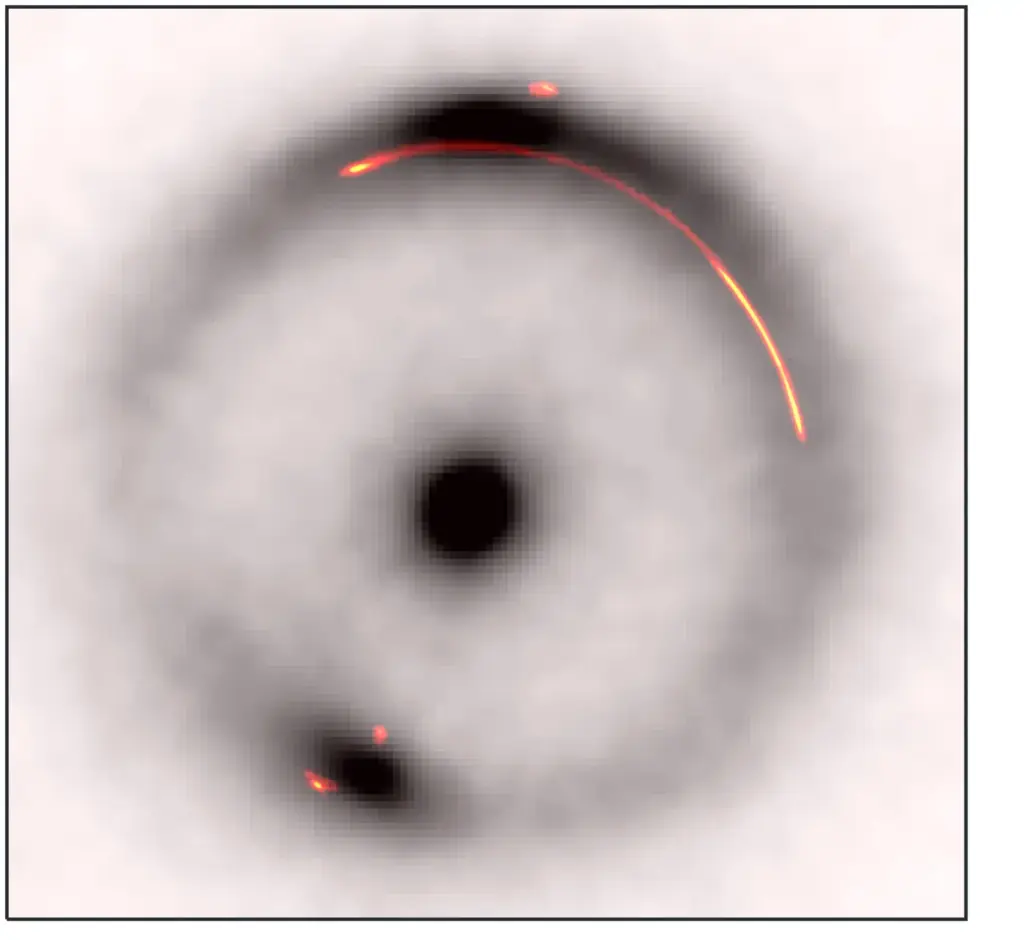
Astronomers have made a significant breakthrough in the quest to understand dark matter, detecting the smallest clump of this elusive substance ever found. Led by Dr. Devon Powell at the Max Planck Institute for Astrophysics, the international team identified a dark matter object with a mass equivalent to one million times that of the Sun, located approximately 10 billion light years from Earth. This discovery provides crucial support for existing theories on galaxy formation.
The detection of the dark matter clump occurred in a region of space as it appeared when the universe was only 6.5 billion years old. Achieving this required the collaboration of multiple radio observatories worldwide, including the renowned Green Bank Telescope in West Virginia, which is the largest fully steerable radio telescope globally.
Utilizing Gravitational Lensing
The team’s discovery relied on the phenomenon of gravitational lensing, a concept predicted by Albert Einstein‘s Theory of General Relativity. This theory describes how massive objects warp spacetime, bending the path of light from objects behind them. During observations of a system known as B1938+666, the astronomers noted a distinct distortion in the gravitational arc, indicating the presence of a previously invisible mass between the Earth and the background galaxy.
Dr. Powell shared the findings in the journal Nature Astronomy, emphasizing that the team used distant galaxies as backlights to reveal the gravitational effects of the dark matter clump. They likened this process to locating an invisible glass ball by observing how it distorts images behind it. The analysis required processing vast amounts of data and developing new computational techniques that operated on supercomputers.
Implications for Dark Matter Theories
This discovery has far-reaching implications for the understanding of dark matter’s distribution in the universe. There has been ongoing debate among scientists about whether dark matter is spread uniformly or exists in concentrated clumps. The identification of this small clump aligns with the cold dark matter theory, which posits that dark matter consists of slow-moving particles that initially formed small clumps through gravitational attraction in the early universe. These particles eventually combined to create larger structures, including galaxies and galaxy clusters.
The astronomers believe that similar dark matter clumps can be found in every galaxy, including our own Milky Way. The challenge now lies in determining if more such clumps exist and whether their findings continue to align with theoretical predictions. Discovering additional clumps across various regions of the universe could necessitate a reevaluation of current theories about the fundamental nature of dark matter.
As researchers continue their search for these elusive structures, the astronomical community is optimistic that further discoveries will enhance our understanding of the universe’s composition and the role dark matter plays in it.






